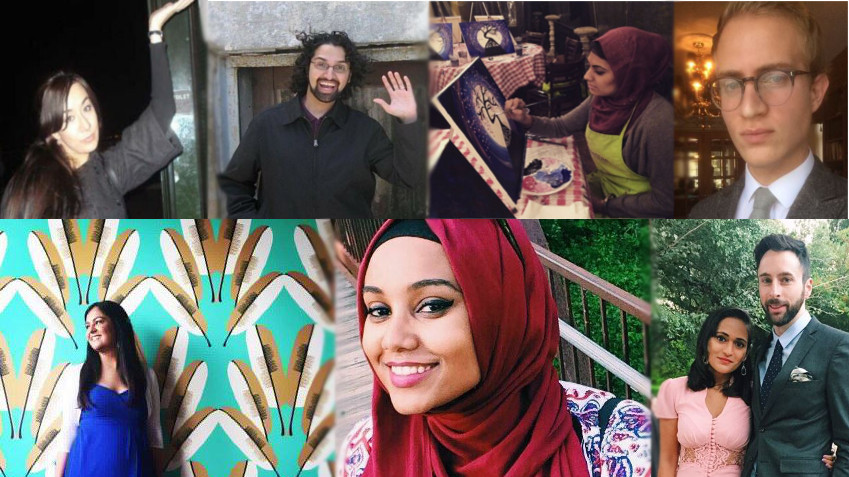
Recent ISIS/ISIS-inspired attacks in San Bernardino and abroad has anti-Muslim rhetoric at an all time high. Between Donald Trump calling on a ban of all Muslims entering the U.S. and for the closing of mosques, it’s a difficult time to be a Muslim American. In an effort to combat the backlash, Muslim Americans are pushing back by tweeting photos under the hashtag #MuslimAmericanFaces.
[Read Related: Hey Donald Trump, Here’s a List of American Muslims You Can Add to Your ‘Watchlist’]
Started by Benjamin Wittes, a senior fellow in Governance Studies at the Brookings Institution, the hashtag asks people to tweet three photos of Muslim Americans that they know. The purpose of the hashtag is to help create a better understanding of the actual Muslim American community rather than the image of Muslim American that is perpetually being showcased in the media:
Enough vile recent rhetoric directed at American Muslims. Share #MuslimAmericanFaces. @maitelsadany @jenn_ruth @shadihamid @maraamdwidar
— Benjamin Wittes (@benjaminwittes) December 9, 2015
.@maitelsadany International human rights lawyer #muslimamericanfaces Share three more pic.twitter.com/7AhEwFtHtw
— Benjamin Wittes (@benjaminwittes) December 9, 2015
.@jenn_ruth Tattooed Texan, journalist, @voxdotcom writer #MuslimAmericanFaces Share three more pic.twitter.com/Lfnq8fi9q8
— Benjamin Wittes (@benjaminwittes) December 9, 2015
.@shadihamid Brookings Middle East Scholar #muslimamericanfaces Share three more pic.twitter.com/8Dg5SGDKtH
— Benjamin Wittes (@benjaminwittes) December 9, 2015
.@maraamdwidar Americanist Political Scientist U. Texas #muslimamericanfaces Share three more pic.twitter.com/T3v1MLfJko
— Benjamin Wittes (@benjaminwittes) December 9, 2015
Since his tweets, the hashtag has gone viral. Thousands of Muslim Americans from all walks of life have posted photos of themselves and others The tweets feature athletes, students, children, lawyers and much more.
Here’s a glimpse of some of the top posts:
#MuslimAmericanFaces showcases the diversity and history of the Muslim community https://t.co/Z7P94yNeGH pic.twitter.com/aRVkFtB6FG
— BuzzFeed (@BuzzFeed) December 14, 2015
Fashion designer. Comic book nerd. Korean beauty product obsessed. Believes Han shot 1st. #MuslimAmericanFaces pic.twitter.com/1qnPuHbl5T
— Fatima Monkush (@FatimaMonkush) December 10, 2015
Fierce Feminist. Sad Writer. Mommy. Always smiling and in love with absolutely everything. #MuslimAmericanFaces pic.twitter.com/a5b2EK7yYJ
— Arnessa (@Rrrrnessa) December 10, 2015
Movie critic. Podcaster. Father of four. Gadfly. #muslimamericanfaces pic.twitter.com/zkzentYmEc
— Zaki Hasan (@zakiscorner) December 9, 2015
My father @sahloul– physician, humanitarian, civic leader, Syrian American, soccer fan #MuslimAmericanFacespic.twitter.com/R7eJXXjFcw
— Adham Sahloul (@adhamsahloul) December 9, 2015
We would love to see your Muslim American! Tweet us @BrownGirlMag with your very own photo and caption.
[Read Related: One Brown Girl Proves You Don’t Have to Belong to a Particular Group to Rally Support for San Bernardino Victims]
 Mona Latif is a marketing manager by day and wannabe fashionista/writer by night. Born and raised in Chicago, she has her Bachelors in Mass Communications and Marketing along with a Masters in Management. Growing up, she was extremely artistic. She would draw, paint, write, and even make her own clothes. Sure, she loves to write and dress well but the reality is, she is just a normal, ethnic, sassy, sarcastic and free spirited girl from Chicago, IL, who is trying to navigate life day by day (and maybe even inspire a person or two). Although she is grateful for the road she’s been on so far, she is, even more, excited to see what the future has in store.
Mona Latif is a marketing manager by day and wannabe fashionista/writer by night. Born and raised in Chicago, she has her Bachelors in Mass Communications and Marketing along with a Masters in Management. Growing up, she was extremely artistic. She would draw, paint, write, and even make her own clothes. Sure, she loves to write and dress well but the reality is, she is just a normal, ethnic, sassy, sarcastic and free spirited girl from Chicago, IL, who is trying to navigate life day by day (and maybe even inspire a person or two). Although she is grateful for the road she’s been on so far, she is, even more, excited to see what the future has in store.



